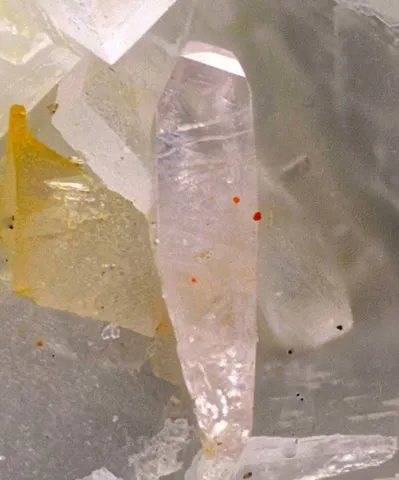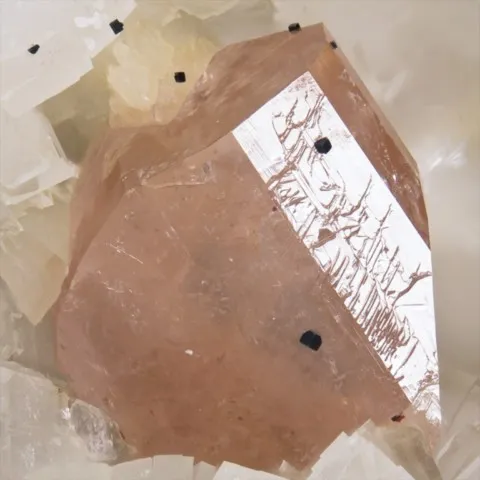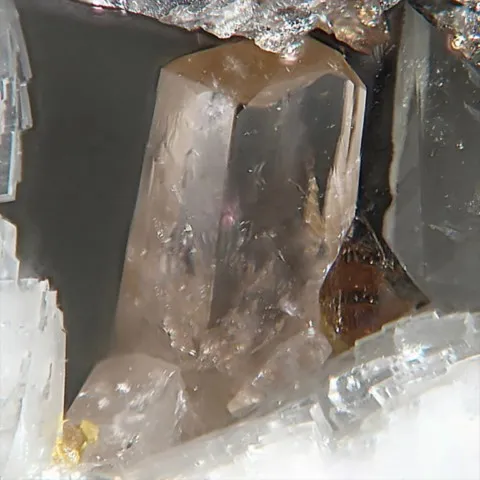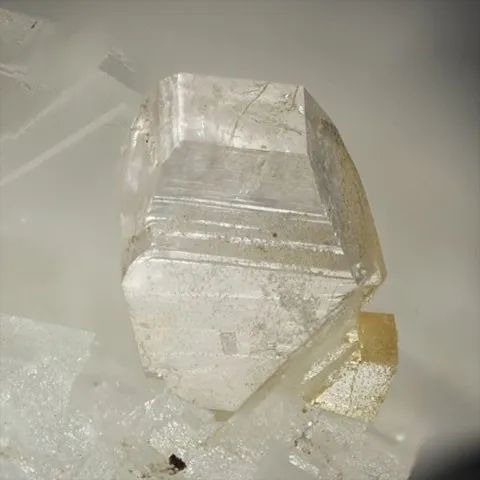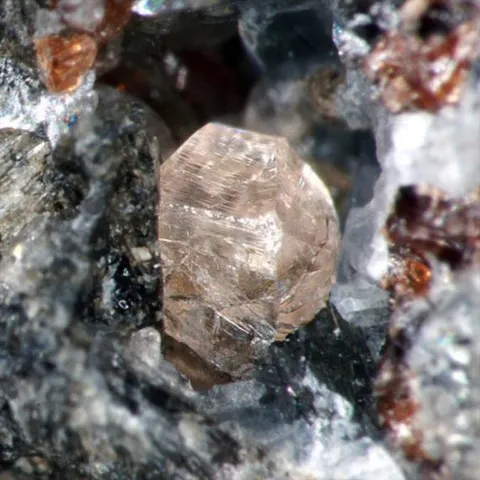IIMORIITE
Class : Silicates
Subclass : Nesosilicates
Crystal system : Triclinic
Chemistry : Y2(SiO4)(CO3)
Rarity : Very rare
Iimoriite is a yttrium silicate with a complex structure, which includes numerous CO3 groups. It is an extremely rare secondary mineral that is found in environments rich in rare earth elements, mainly pegmatites with rare earths and uranium, hyperalkaline granites with riebeckite and aegyrine and their pegmatites with amazonite - zinnwaldite. It was named in honor of the Japanese mineralogist Satoyasu Iimori of the Tokyo Institute of Physical and Chemical Research. Iimoriite forms small grains and masses of reduced size, not exceeding 3 cm, pale brown to pale purplish gray in color.
Main photo : Iimoriite of Trimouns, Luzenac, Ariège, France © Pascale & Daniel Journet
Iimoriite in the World
Twinning
No twins known for this mineral species.
Fakes and treatments
No fakes recorded for this mineral species.
Hardness : 5.5 to 6
Density : 4.47
Fracture : Underterminated
Streak : White
TP : Translucent to transparent
RI : 1.753 to 1.830
Birefringence : 0.077
Optical character : Biaxial -
Pleochroism : Visible
Fluorescence : None
Solubility : Hydrochloric acid
Magnetism : NoneRadioactivity : None

